Do you want to experience a relaxing and luxurious tour in China? In this route, you are not only able to travel to the metropolises, such as Beijing and Shanghai, but also can visit places with spectacular natural landscapes like Guilin. In this China luxury tour from Beijing, we are going to several well-known scenic spots like the Forbidden City and the Great Wall. And this China luxury tour with Guilin will help you to enjoy the masterpieces of the nature, like the karst landscape. Then a tour in Suzhou and Hangzhou will help you relax and appreciate the antique and classic style of southern China architectures. This China luxury tour includes the most comfortable and pleasant experiences in many different ways, such as in the transportation, the food, the hotels, which are different from that of other ordinary tourists. What are you waiting for? Don’t hesitate to choose us and come to the 12 days China Luxury Tour. We are looking forward to offering you a pleasant journey with the best service.

Upon your arrival in Beijing, our local tour guide will be waiting for you in the airport with your name sign. Then he or she will transfer you to your hotel.
After breakfast, you will go to the Tian’anmen Square. Located in the center of Beijing, it was built in 1417. It is the place that witnessed the founding the People’s Republic of China. When we mention Tian’anmen Square, we have to talk about the white marble pillars in front of Tian’ anmen Gate Tower, Huabiao. Huabiao is a traditional form of ancient Chinese architecture. It is generally used in front of large buildings such as ancient palaces or tombs, and plays a decorative role. There is one pair of Huabiao in front of the Tian’anmen Gate Tower and there’s another pair behind it. These Huabiaothat we see today were built during the Yongle Period (1403-1424) of the Ming Dynasty with a history of 600 years. Made of white marble, each of them is 9.57 meters high, 98 centimeters in diameter and weighs about 20 tons. The upper part of these Huabiao are engraved with auspicious clouds. On the top of each of them, there is a deity animal in ancient Chinese myths, named Hou. It is a kind of auspicious animal shaped like a dog. The different directions that each of them face expresses different meanings. The two Hou behind the Tian’anmen Gate Tower face towards the palace, which means that the emperor should leave the imperial city and learn about people’s opinions. The two in front of the Tian’anmen Gate Tower face towards the outside, which means that the emperor should return to the palace in time.
Then, you will go to the Forbidden City (closed each Monday). The Forbidden City in Beijing was a royal palace of the Ming and Qing Dynasties and also one of the largest and most completely preserved wooden ancient buildings in the world. Among all the palaces in the Forbidden City, the Treasure Gallery always attracts people’s eyes. It shows a variety of ancient cultural relics, including all kinds of gems, gold and silver vessels, pearl, jade, gold phoenix coronet. The most famous treasure is a jade carving called “Dayu Controlling Water”, which is the largest jade carving in this palace. It is 224 centimeters high, 96 centimeters wide and weighs 5,000 kilograms. The craftsmen spent seven years to carve it, and then three years to transport it to Beijing. It cost such enormous workforce and material resources to complete this treasure. The theme of the carving is the story of Dayu (an ancient Chinese emperor) controlling water. More than 4,000 years ago, China encountered the biggest flood in history. Faced with the natural disaster, the Chinese nation did not surrender or fear, but chose to fight against it tenaciously, and successfully resolved the natural disaster in the end following the lead of Dayu. Carving this great story on the jade is to celebrate the great spirit of the indomitable struggle of human beings. Therefore, from the aspects of volume, value, and connotation, the carving is worthy of being one of the greatest among all the other treasures.
For lunch, a special experience will be included in our China luxury tour, and we will provide you with a special Peking Roast Duck meal, instead of ordinary Chinese meals. We will take you to Quanjude Roast Duck Restaurant to experience the most authentic and famous roast duck in Beijing. All ducks served here are freshly roasted. Normally, the chef will be carving and serving the roast duck at your table. The chef will cut the whole duck into roughly 108 pieces in 1 to 2 minutes and put them in a tidy order, leaving each piece of meat with duck skin on. The duck meat is full of fat and gravy but not greasy at all. We believe that you will be impressed by its taste.
After lunch, you will go to the Summer Palace. It’s about 15 kilometers away from the downtown area. We will drive about 25 minutes to arrive there after lunch. Located in the western suburbs of Beijing, the Summer Palace is the most complete existing ancient Chinese royal garden, and covers an area about 290 hectares. It was the palace where the emperors used to live while traveling. Walking around the park, you can see a stone boat standing quietly in the northwest of Kunming Lake (the large lake inside Summer Palace), named Shifang. It was built during the reign of Qianlong (1711-1799). Shifang totaled 36 meters long, with a two-layered white building topped with gorgeous brick carvings. Shifang can be said to be the most mysterious building in the Summer Palace, as many people may not know what the original function of this building was. Here’s a popular saying about the origin of it. There is an old Chinese idiom goes like this “the water can carry the boat, but can also overturn the boat”, that is to say, the ordinary people can push the emperor to the throne, but if the emperor does not implement the benevolent policies, the ordinary people can also pull the emperor down from the throne. So, Emperor Qianlong ordered to build the stone boat with the intent to use this sentence to remind himself that he should not forget the people and should conform to the public opinions. He also hoped for the perpetual stability of the Qing Dynasty. He hoped that the Qing Dynasty can be as steady as this stone ship.
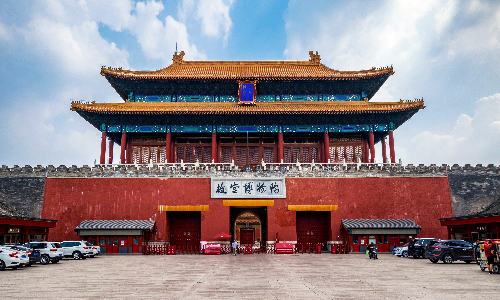

In the morning, we will drive northwest for about an hour to the Ming Tombs. The Ming tombs is about 50 kilometers away from the downtown areas. There are 13 emperors of the Ming Dynasty buried here. The construction of the very first tomb was started in the 7th year (1409) of the Yongle period of the Ming Dynasty. Today we will take a look at the Ding Tomb, the only one that has been excavated among the thirteen tombs. It is the tomb of the 13th emperor of the Ming Dynasty. The construction lasted for about 6 years from 1584 to 1590. In 1956, the archaeological team started to excavate it with the permission of the government. It took the team around one year to find the “diamond wall”, the protective wall of the underground palace with a trapeziform entrance on it. The diamond wall was made of very solid materials and the entrance was piled up by bricks. After the team finally opened the entrance, another problem arose-a puff of black smoke went off. They waited about a week for the black smoke to disperse gradually. But the inside was all dark and the workers were afraid that there might be some arrows or poisonous gas in the tomb, according to local folklore. Therefore, they threw a cock brought from the nearby village into the tomb and waited. Several days passed, they could still hear the cock’s crow. Then they knew that it was safe to go in, and started their archaeology work.
After lunch, you will be driven for around an hour to our next stop, the Great Wall. It is located in the northwest of the Ming tombs, about 41 kilometers away from it. The Great Wall is the military defense works in ancient China. The earliest history of it can be dated back to the Western Zhou period (1046BC-771BC) and then the construction lasted for 2000 years. Today, the section we will visit is the Mutianyu Great Wall. It is the best-preserved and longest section in the Great Wall. The vegetation coverage rate in Mutianyu Great Wall is over 96%, which is a unique feature that all the other sections cannot be compared with. It is virtually a big natural oxygen bar where you can see the lush trees and grass and various kinds of plants. When it comes to climbing the Great Wall, we have offered several facilities for you to choose. You can easily go up and down by taking the cable car or chairlift. For those tourists who are fond of some fresh and exciting experiences, you can go up by the chairlift and go down by toboggan, which is a popular activity on the Mutianyu Great Wall.
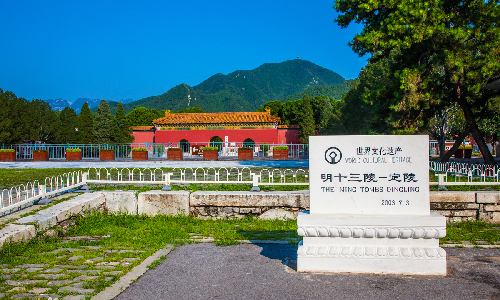
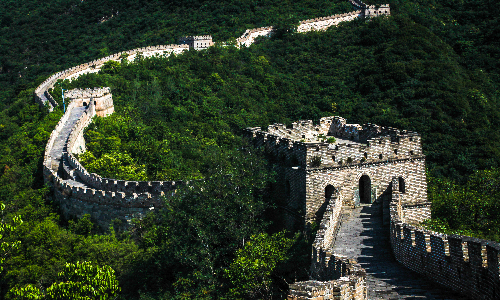
 Guilin
Guilin After breakfast, you will be sent to the airport. Then you will take the estimated flight CA8621 12:40/15:40 to Guilin. Upon arrival, our local tour guide will be waiting for you and then send you to the arranged hotel so that you can have a good rest.
After breakfast, we will drive southwest for about 45 minutes to the Zhujiang Pier, which is around 24 kilometers away from the city center. You will take the Li River Cruise for about 4 hours to finally arrive in Yangshuo. During this trip, you can enjoy the good view of Li River. For tourists who attend the Luxury Tour, the cruise that we offered is a 4-star cruise, which is different from the 3-star cruise for other ordinary guests. And the lunch on the 4-star cruise will be buffet style which is better than the lunch box on the 3-star one. Also, the seats in the 4-star cruise ships are all upholstered armchairs, hopefully it will provide you with a comfortable and pleasant journey.
After you get off the boat, we will have a visit to the Yangshuo West Street. The Yangshuo West Street is a pedestrian street in Guilin, Yangshuo county. It is about 8 meters wide and 800 meters long. Having a history of 1400 years, it is the oldest and most prosperous street in Yangshuo. The street is paved by marble. And the buildings on both sides were basically built around sixty or seventy years ago. You can also see some brick and tile houses built in the Ming (1368-1644) and Qing Dynasty. As a hot place for tourists, you can find various kinds of crafts shops, shops of calligraphy and paintings, hotels, cafes, and bars here. Since 1970s, many western tourists who are fond of the traditional and classic style of in Yangshuo West Street have gathered here. Some of them stayed here and opened their own shops. The street has gradually become a gathering place of Westerners, reflecting the integration of Chinese and Western cultures.
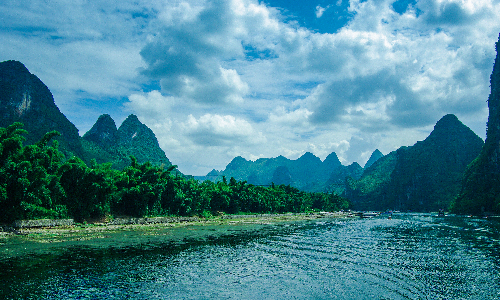
In the morning, we will visit the Reed Flute Cave. It is located in the northwest of Guilin, 5 kilometers away from the downtown area. The Reed Flute Cave is with karst landscape. It is about 240 meters deep. There are many exquisite stalagmites, stone pillars, stone flowers, and stalactites in different shapes, all of which are formed by the groundwater dissolving the calcium carbonate in the rock, plus millions of years of precipitation, accumulation and crystallization. All the landscapes are the masterpieces of nature instead of artificial modification. Therefore, the Reed Flute Cave is called the “the Artistic Palace of Nature”. Many of Chinese state leaders and heads of foreign countries have visited the Reed Flute Cave and highly recommended it. Lady Nixon once praised the cave as “peculiar and spectacular, just like a palace”.
The Elephant Trunk Hill is the next place you will visit. The hill got its name because its shape resembles a giant elephant standing by the river, drinking water. It has become a famous tourist attraction since the Tang (618-907) and Song (960-1279) Dynasties. With a history of more than 1,000 years, it has become the symbol of Guilin. Legend has it that the Elephant Trunk Hill used to be a giant elephant and was the mount of the Emperor of Heaven. It was injured during wars and then collapsed in Guilin. After being kindly treated by the local villagers, it decided to stay here to help villagers with farmwork and defeat monsters. The elephant stayed here until the end of his life, and turned into a stone statue - the Elephant Trunk Hill upon his death.
After lunch, we will have a visit to the park of Shanhu Lake and Ronghu Lake. Both lakes are situated in the city center. Ronghu Lake connects with Shanhu Lake to the east. The Shanhu Lake (Shan means fir tree in Chinese) is named so because there are fir trees growing beside the lake. The Ronghu Lake (Rong means banyan tree in Chinese) got its name because there are banyan trees growing beside it. After taking a few steps in the park, you can see the eye-catching new landmark of Guilin, the Sun and Moon Twin Pagodas. The Sun and Moon Twin Pagodas are situated in the middle of Shanhu Lake. The Sun Pagoda has 9 stories and is 41 meters tall, made of copper. It is the tallest pagoda made by copper in the whole world. The Moon Pagoda has 7 stories, which is 35 meters tall. It is decorated by colored glaze. They have got their names because the two pagodas are towering into the clouds, pointing directly to the sun and the moon. What is unique about the twin pagodas is the way of sightseeing. To enter the Sun Pagoda, you must pass through an 18-meter-long underwater passage and then take the elevators to go up. After climbing onto the Sun Pagoda, you can have a panoramic view of Guilin.
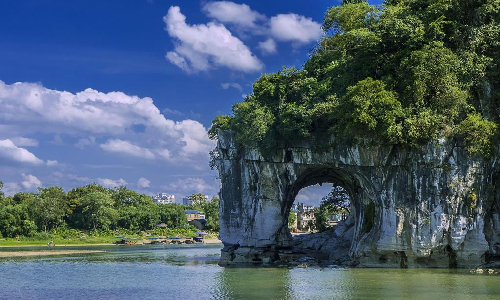
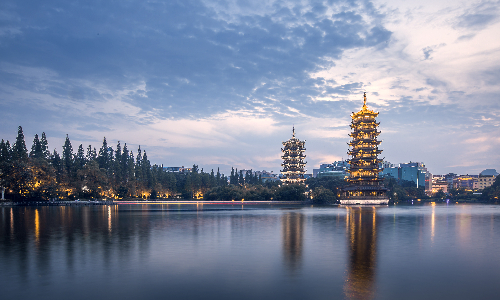
 Hangzhou
Hangzhou You will have some free time by yourself this morning before your guide and driver take you to the airport to catch the estimated flight MU5538 13:50/16:05 to Hangzhou. Our local tour guide in Hangzhou will be waiting for you and then escort you to your hotel.
In the morning, we will take the West Lake boat to enjoy the landscapes of the West Lake. The West Lake is located in the west of Hangzhou. The lake covers an area of 6.38 square kilometers. There are more than 100 attractions in the West Lake scenic area, such as the Broken Bridge and the Su Causeway. Do you know the legend of the origin of the West Lake? It is said that long time ago, there was a beautiful golden phoenix, named “Jinfeng” and a strong, vigorous dragon, named “Yulong” living in the Heavenly Palace (the palace of the Jade Emperor in Chinese myths). One day, they accidentally found a giant unprocessed jade on an island in the Milky Way. They brought it back and carved it carefully every day and made it into a bright pearl, whose light would make the trees evergreen and flowers in full blossom. This was heard by the Queen Mother of the West (goddess of longevity), and she sent the heavenly troops to steal it. After Jinfeng and Yulong found out that the pearl had been stolen, they went to the palace of the Queen Mother of the West and wanted to get it back. During their fight for the bright pearl, the pearl accidentally fell down from the heaven and slid all the way to the mortal world. As soon as the pearl touched the ground, it turned into the West Lake. Yulong and Jinfeng then turned into two mountains and accompanied their beloved pearl by the lake ever since.
Heading to the west, our next stop is the Lingyin Temple. The Lingyin Temple is an ancient Chinese Buddhist Temple, which was built about 1,800 years ago. The temple contains many Buddha statues, artifacts, stone towers, calligraphy and paintings and other cultural relics. It is an important religious place of Chinese Buddhists. When we mention the Lingyin Temple, we have to know a well-known monk, named “Jigong”. Jigong is an eminent monk in the Southern Song Dynasty (1127-1279), who used to live in the Lingyin Temple. He often dresses in rags and acts a bit madly. He is not bound by the precepts and is addicted to meat and alcohol. At the same time, he is very knowledgeable and charitable. He knows traditional Chinese medicine and has successfully cured many people’s complicated diseases. He often robs the rich and helps the poor, remaining to be a unique and wonderful image in Chinese people’s minds.
Between the West Lake scenic area and the Qiantang River stands the Six Harmonies Pagoda, where you will visit next. The pagoda totaled 59.89 meters high, and was first built in the Song Dynasty (960-1279). What is so unique about this pagoda is that it is in double-cylinder type, while the pagodas we usually see are in single-cylinder type. The double-cylinder type means that there is an outside pagoda covering the inside pagoda. Seeing from the outside, the Six Harmonies Pagoda is with 13 stories. But if you look from the inside, you will surprisingly discover that this pagoda only has 7 stories. Come and see it with your own eyes!
Next, we will visit the Dragon Well Tea Plantation in Dragon Well village, the core producing area of Hangzhou’s tea. If you visit this place in Spring, you may see that many tea growers are moving back and forth among the green tea gardens, busy with picking tea. The Dragon Well tea, also called Longjing Tea, is a golden name card of Hangzhou. It has green color, rich fragrance, sweet taste and beautiful shape. It has already been famous at home and abroad, and was selected as the national gift tea served for state guests.
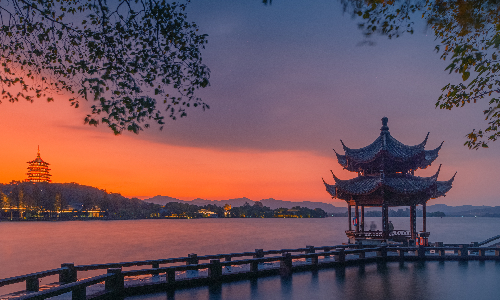
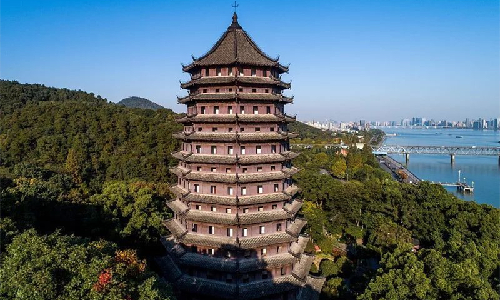
 Suzhou
Suzhou After breakfast, we will drive northeast for about two hours to Suzhou, which is about 156 kilometers away from Hangzhou. We will visit the Humble Administrator’s Garden. It is one of the four major classical gardens in China and the representative work of the Southern China classical gardens. The garden is mainly divided into three parts, the east section, the middle section and the west section. The east garden well-organized in its construction. The middle garden is the core section of the whole garden. It is where the most essential part of the garden lies. The architectural style of the west garden is extremely exquisite. The original master of this garden was an official in the Ming Dynasty, named Wang Xiancheng. Why would he build such a garden? Because his official career was not smooth at all and he had even been framed by others. That was why he wanted to quit his job and find a beautiful place to live for the rest of his life.
After lunch, we will take the Canal Boat for about 50 minutes. Along the way, you will pass some ancient gates of Suzhou and many bridges of different styles. Some of those bridges are with beautiful relief carvings underneath, which is something you can only see by taking a boat. Then you will have some free time at the Shantang Street. In the year of 825, Bai Juyi, the great poet of Tang Dynasty, was appointed as the official of Suzhou. He decided to dredge up the river courses outside the city and the Shantang river came into being. The street built by the river was then called Shantang Street. The architectures on the street are mostly in traditional Southern China style, with white walls and grey tiles, presenting a simple and classic picture. It is a great place to take some pictures. You can find a teahouse to have some tea or try some snacks here.
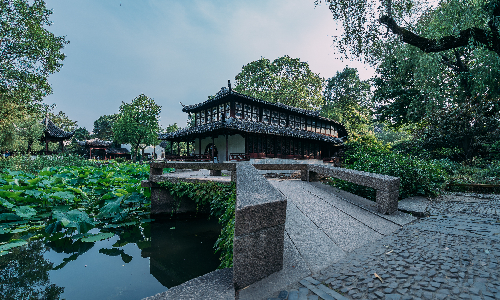

 Shanghai
Shanghai In the morning, we will drive towards the east for about one and a half hours to Shanghai, which is around 100 kilometers away from Suzhou.
After lunch, we will arrive at the Shanghai Tower, a high-rise landmark of Shanghai. It is about 632 meters high with 127 stories above ground and 5 stories underground. It is the highest building in Asia. It is also equipped with the fastest elevator in the whole world. Up to the top, you will have a panoramic view of Shanghai, which is definitely going to be a fantastic feeling.
Then we will go to Nanjing Road. The Nanjing Road is the most bustling and prosperous pedestrian street in China, always attracting tourists from home and abroad to visit. It is 5.5 kilometers long. The street is filled with people all year long.
After some free time in Nanjing Road, we will proceed to the Bund. It is about 1.5 kilometers long, and you will see many different buildings with unique styles and features along the Bund. We can say without exaggeration that the night view with splendid light shows on the Bund is the greatest night view that you can see in China, which will definitely impress you a lot. A Huangpu River Cruise tour will be arranged for you next as a highlight in our luxury tour, and it will allow you to enjoy the night time in Shanghai to the fullest.
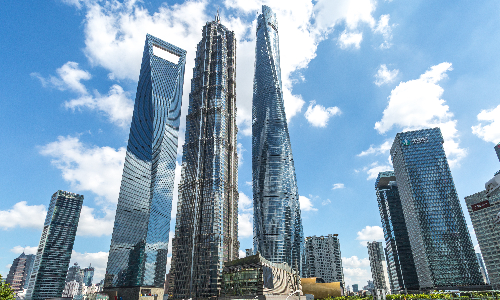

In the morning, we will visit another classic garden, Yu Garden (closed each Monday). It is located in the northwest of Shanghai. “Yu” means “safe and sound” in Chinese. It was originally a private garden built in the Ming Dynasty (1636-1912). It was then open to the public in the year of 1961. Yu Garden is small and beautiful, and the corridors inside the garden are nice places for taking photos.
The Jade Buddha Temple was initially built in the period of emperor Guangxu (1882) in the Qing Dynasty. It has got its name because there are jade Buddha statues being worshiped inside the temple. An eminent monk in the Qing Dynasty, named Huigen, went on his journey of pilgrimage, and brought back 5 jade Buddha statues from Burma. On his way back, he passed by Shanghai, and left two statues here. Then people built up a temple to enshrine and worship the statues, and named the temple as Jade Buddha Temple.
In the afternoon, your guide will first take you to Xintiandi, a place where fashion meets culture. There are various kinds of museums, free exhibitions, bookstores and snacks stores. Next, you will go to Tianzifang Market, the cultural creative blocks. It is said that the Tianzifang Market used to be a place where many artists lived and created their art works. It is now a great place to spend a leisure afternoon for art lovers and tourists. You can buy some souvinirs like silk products, shirts with “I love Shanghai” for your family and friends here.
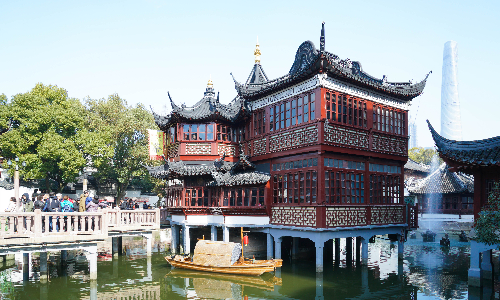
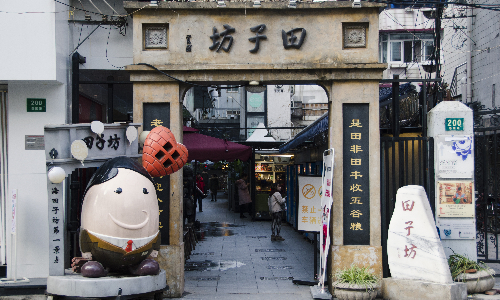
Today, your 12 daysChina Relaxing Luxury Tour will come to an end. You will be transferred to the airport and head towards your hometown. We are looking forward to meeting you again in the future.
Author: Yang Yawen
Proofreader: Li Yiwen
| City | Five Star hotel list | Four Star hotel list |
|---|---|---|
| Beijing | Sunworld Dynasty Hotel Beijing Wangfujing | Sunworld Hotel Wangfujing |
| Guilin | Lijiang Waterfall Hotel | Guilin Bravo Hotel |
| Hangzhou | Landison Plaza Hotel | Best Western Plus Meiyuan Hotel Hangzhou |
| Suzhou | Grand Trustel Aster Hotel Suzhou | Suzhou Jasmine Hotel |
| Shanghai | Ocean Hotel Shanghai | Courtyard by Marriott Shanghai Central |
 |
![]() About your child or infant, please contact us for a discounted price.
About your child or infant, please contact us for a discounted price.



We started with a few days in Beijing & ended in Shanghai, from where we visited the Forbidden City and Great Wall. In between we visited Terra Cotta Warriors Museum, Panda Base, Shanghai Disneyland.

We had a wonderful holiday in China which will remain long in the memory. China is a breathtakingly beautiful country full of splendid temples and palaces, mountains and rivers, peaceful rural scenes and bustling shopping streets.
 QUICK ENQUIRY
QUICK ENQUIRY